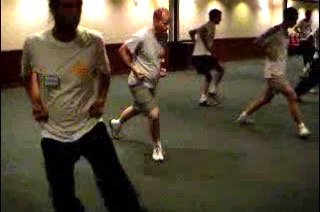FOOTWORK SECRETS FOR HEALTH, EFFICIENCY AND ELEGANCE
 Do you know why the footwork here is incorrect?
Do you know why the footwork here is incorrect?
Although many students have heard of the term “ma-bo”, not many realize that it refers to two aspects, namely “ma” and “bo”, and not just one term “ma-bo” which they take to mean only stances.
“Ma”, which literally means “horse” in Chinese, refers to stances. “Bo”, which means “steps”, refers to footwork.
Footwork is an essential aspect in kungfu training, but it is often neglected. As a result, many kungfu practitioners bounce about like Boxers. Worse, due to their ignorance of correct kungfu footwork, many kungfu students and even instructors have sustained long-term knee injuries.
In this and the subsequent video series, Grandmaster Wong reveals some important secrets of kungfu footwork. It is the first time in Shaolin Wahnam history that these secrets are explained in public.
 Why is the Footwork Incorrect?
Why is the Footwork Incorrect?
The footwork here is performed wrongly on purpose. Do you know why it is wrong? If you know the answer you may understand why many kungfu practitioners today have knee problems.
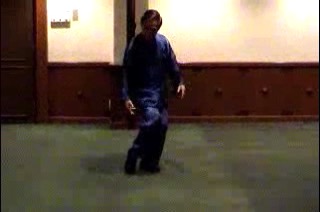 What is Differentiating Yin-Yang?
What is Differentiating Yin-Yang?
Do you know why and how before you move your left, you move your right? This is an example of differentiating yin-yang.
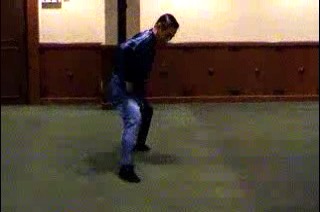 What and Why is Movement from the Waist?
What and Why is Movement from the Waist?
Do you know what is meant by movement from the waist? And why is this important? You will also learn from this video clip what is meant by movement starting from the back leg, and why before you move back, you move forward.
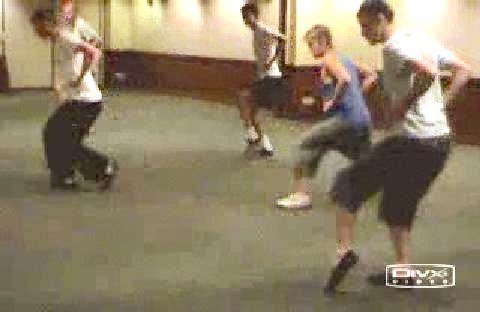 Moving Forward with Good Balance and Elegance
Moving Forward with Good Balance and Elegance
The uninitiated may complain that in combat, combatants do not move slowly. Do you know why the course participants move slowly? Notice that their movements are circular. Do you know why they do not move forward in a straight line as it would be faster?
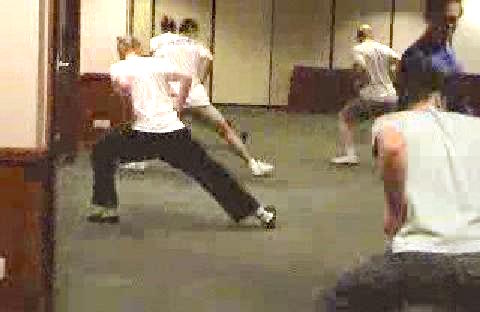 Turning Around on Toes or Heels
Turning Around on Toes or Heels
You may turn around using your toes or your heels as pivot. This is another manifestation of differentiating yin-yang. Do you know what advantages are obtained in this way, or what disadvantages would occur if you turn around otherwise?
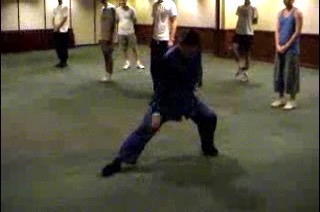 Differentiating Yin-Yang in Moving Back
Differentiating Yin-Yang in Moving Back
Your movements should not only be fast but also stable. This is an example of yin-yang harmony. Why do you think course participants move back in this manner, when it is apparently slower than their normal untrained movement?
Having familiarized themselves with the mechanics of smooth, sure movements, participants now reduce the size of their movements by making the circles smaller. Notice the smaller circular movements of the shoulders.
 Making Movements Fast and Sure
Making Movements Fast and Sure
The size of the movements is further reduced. Notice that at the first stage, the shoulders make a big circle as you move forward. At the second stage, the waist makes a medium circle. Now at the third stage of development, the knees make a small circle. The circular movements have been so reduced that they appear linear to uninitiated observers.
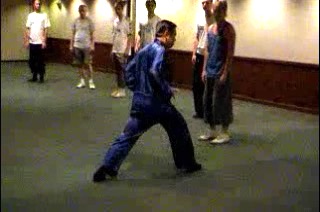 Rolling Forward in Fast, Sure Movement
Rolling Forward in Fast, Sure Movement
Earlier, participants moved forward by bringing their back leg to the front. Now they “roll” forward by bringing the back leg behind the front leg, and then bring the front leg forward. The movement is circular but the curve is so small that it appears linear. What disadvantages would you have if you move forward in a linear fashion?
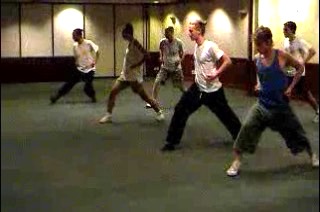 Varying Spacing in Forward Movements
Varying Spacing in Forward Movements
You may roll forward in full steps, half steps, three-quarter steps or in any suitable combinations. Your movements must be fast and sure.
Here is how to roll back. Do you know why as you move back even if there is a trap door or an obstacle behind you, you would not fall or tumble?
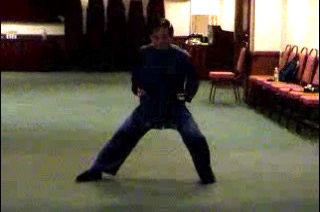 Eliminating Intermediate Steps
Eliminating Intermediate Steps
By eliminating intermediate movements, you can reduce twelve steps to seven when moving forward. Hence, even if your absolute speed remains the same, you are almost twice as fast. Added with the time gained in reducing your movements from large to small, you can be four times as fast without attempting to be faster!
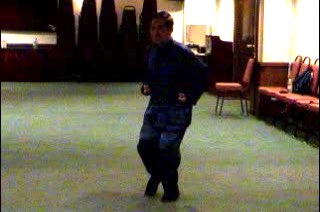 Continuous Flow instead of Individual Steps
Continuous Flow instead of Individual Steps
Another way to eliminate unnecessary steps and consequently to increase speed is to perform the movements as one continuous flow instead of as individual movements. Hence, there are no stops in between.
Participants practice what they have just learnt. It is heartening to note that their movements are balanced and elegant.
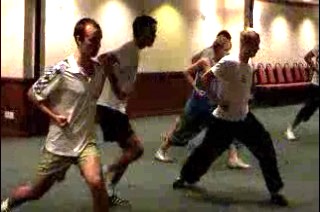 Improve Health, Not Sustain Injuries
Improve Health, Not Sustain Injuries
Here the participants practice moving back with grace and balance. With this training they are sure of at least one big advantage many other practitioners may not have. They would not develop knee injuries from their training, which unfortunately, and ironically, happen to a huge number of martial art students and even instructors.
Footwork Secrets of Health, Efficiency and Elegance from Wong Kiew Kit on Vimeo.
1. Stances: the Foundation for Internal Force and Combat Efficiency
2. Footwork Secrets for Health, Efficiency and Elegance
3. Moving into a Same Direction using Different Ways to Gain Advantages
4. Picture-Perfect Forms and Flowing Movements
5. From Random Fighting to Patterns, and from Patterns to Sequences and Sets
6. One-Step Sparring to Develop Combat Skills
7. From Pre-Arranged Sparring to Guided Sparring
8. Using Techniques and Tactics in Sparring
9. The Five Basic Kicks
10. The Secrets of Side Kicks and Continuous Cannons
11. How You may Defeat Opponents Experienced in Random Free Sparring
12. How Would a Fragile Girl Counter a Powerful Sweeping Kick from a Muay Thai Fighter?
13. Shaolin Felling Techniques and their Defences
14. Safety First Before Executing Felling Techniques
15. From Combat Sequences to Free Sparring
16. Sixteen Combat Sequences and Five Kungfu Sets
17. Surprise your Attacker with a Counter-Attack
18. Working out Ways to Fight a Boxer
19. Effective Tactics and Techniques against Boxers
20. From Gross Outline to Fine Details
21. Exploiting Advantage to Clinch Victory
22. Variety of Kungfu Techniques against Boxers
23. Analysis of Techniques Used against Boxers
24. Using Shaolin Kunfu against Boxing in Free Sparring
25. Effective Shaolin Tactics and Techniques against Kick-Boxing
26. Shaolin Kungfu against Kick-Boxing in Free Sparring
27. How to Handle a Karate Exponent
28. How to Handle a Taekwondo Exponent
29. How to Handle a Wrestling Exponent
30. Understanding the Typical Attacks of Muay Thai Fighters
31. Grandmaster Ho's Secrets in Countering Muay Thai Fighters
32. First Avoid Defeat, Then Secure Victory
33. Counteroing the Elbow and Knee Attacks of Muay Thai Fighters



